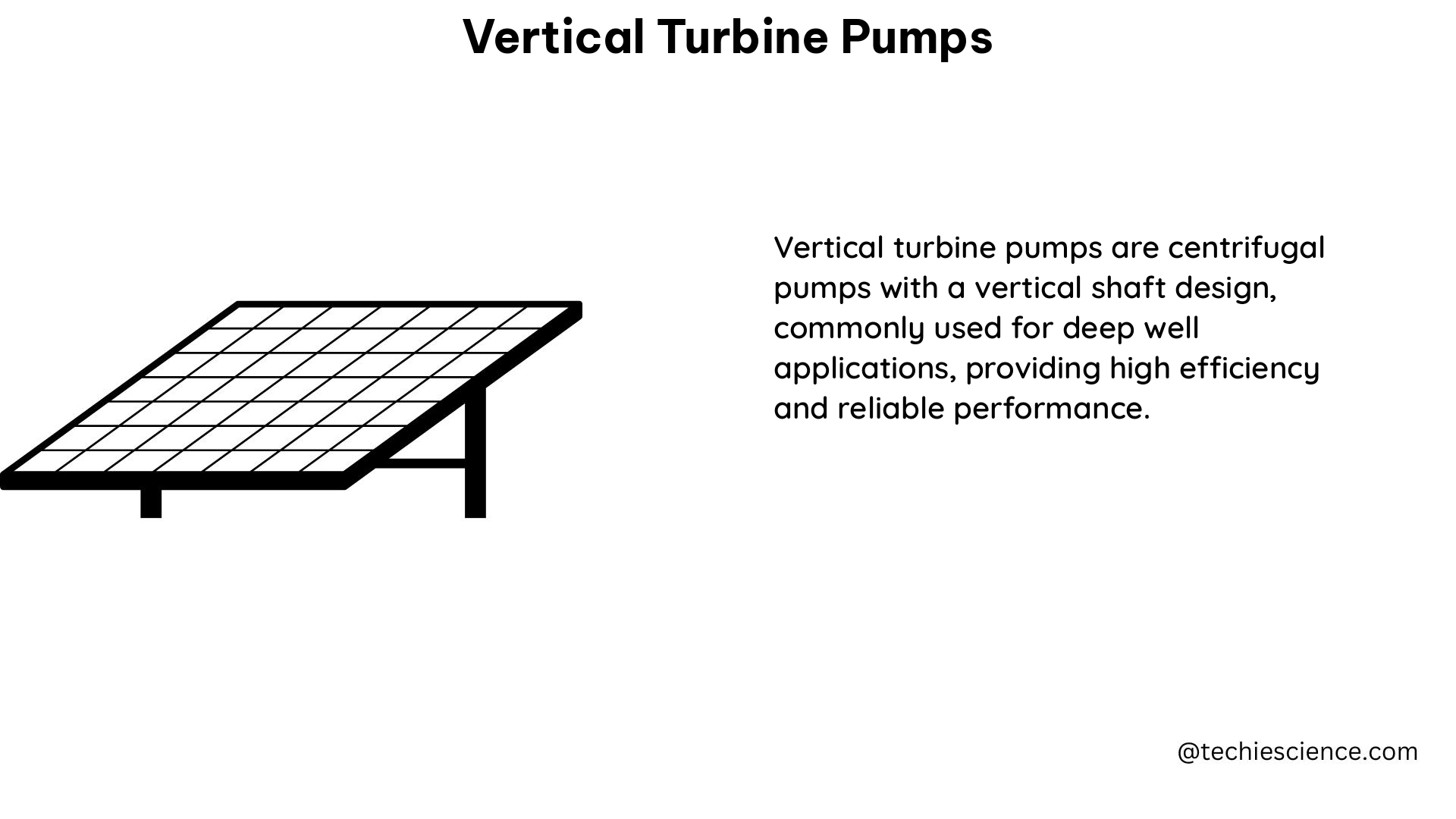Vertical turbine pumps are a crucial component in various industries, including water and wastewater treatment, oil and gas, and power generation. These pumps are designed to move large volumes of fluid vertically, making them ideal for deep wells, water intake structures, and industrial processes. The vertical turbine pump market is expected to grow significantly in the coming years, with a projected valuation of US$ 754.4 Million by 2033 in North America alone, driven by the increasing demand for efficient and reliable pumping solutions.
Flow Rate and Head
The flow rate of a vertical turbine pump is the volume of fluid it can move per unit of time, typically measured in gallons per minute (GPM) or cubic meters per hour (m³/h). The maximum flow rate for a single-stage vertical turbine pump can range from as low as 100 GPM (22.7 m³/h) to as high as 50,000 GPM (11,356 m³/h), depending on the pump size and design.
The head, or the height to which the pump can lift or move the fluid, is another critical parameter. Vertical turbine pumps can achieve heads ranging from 10 feet (3 meters) to over 1,000 feet (305 meters), with the most common range being 50 to 500 feet (15 to 152 meters).
Power Consumption and Efficiency

The power consumption of a vertical turbine pump is the amount of electrical or mechanical power required to operate the pump, typically measured in horsepower (HP) or kilowatts (kW). The power consumption can range from as low as 5 HP (3.7 kW) for smaller pumps to over 1,000 HP (746 kW) for larger, high-capacity units.
The efficiency of a vertical turbine pump is the ratio of the pump’s output power (in terms of fluid flow and head) to its input power, typically expressed as a percentage. Vertical turbine pumps can achieve efficiencies ranging from 70% to 90%, with the most efficient designs reaching up to 92%.
Net Positive Suction Head (NPSH)
The Net Positive Suction Head (NPSH) is the minimum pressure required at the pump inlet to prevent cavitation, which can cause damage to the pump. NPSH is measured in feet or meters of liquid column. For vertical turbine pumps, the NPSH required (NPSHR) can range from as low as 5 feet (1.5 meters) for smaller pumps to over 50 feet (15 meters) for larger, high-capacity units.
Impeller and Stages
The impeller diameter of a vertical turbine pump is typically measured in inches or millimeters. Impeller diameters can range from as small as 6 inches (152 mm) to as large as 60 inches (1,524 mm) or more, depending on the pump size and application.
The number of stages, or impeller stages, used in a vertical turbine pump can affect the pump’s flow rate, head, and efficiency. Single-stage pumps are common for lower-head applications, while multi-stage pumps (up to 8 stages) are used for higher-head applications.
Materials of Construction
The materials used in the construction of a vertical turbine pump can affect its durability, corrosion resistance, and compatibility with various fluids. Common materials include cast iron, stainless steel, bronze, and engineered plastics, such as polypropylene or polyvinyl chloride (PVC).
Dimensional Measurement and Quality Control
Accurate dimensional measurement of vertical turbine pumps is crucial to ensure proper manufacturing and installation. Advanced technologies, such as KEYENCE’s Wide Area Coordinate Measuring Machine (WM Series), can provide high-accuracy measurements of large-scale targets, enabling quantitative measurement and digital data management. These technologies help ensure that pumps are manufactured and installed correctly, reducing the risk of errors and downtime.
Maintenance and Repair
While some aspects of vertical turbine pump maintenance, such as visual inspections and basic troubleshooting, can be performed by trained personnel, more extensive repairs and modifications should be left to qualified professionals. These complex machines require a high degree of technical expertise to design, manufacture, and maintain.
In summary, vertical turbine pumps are sophisticated pieces of equipment that require careful consideration of various measurable and quantifiable data points, including flow rate, head, power consumption, efficiency, NPSH, impeller diameter, number of stages, and material of construction. Accurate dimensional measurement and quality control are essential to ensure proper manufacturing and installation, while maintenance and repair should be handled by qualified professionals to maintain the pump’s performance and reliability.
References:
– Vertical Turbine Pump Industry Analysis in North America Eyes US$ 754.4 Million Valuation by 2033, Riding on a 4.2% CAGR | Future Market Insights. (2023, December 7). Retrieved from https://finance.yahoo.com/news/vertical-turbine-pump-industry-analysis-143000716.html
– Vertical Turbine Pumps Market Scope with Size , Share … – LinkedIn. (2024, March 29). Retrieved from https://www.linkedin.com/pulse/vertical-turbine-pumps-market-scope-size-share-regional-analysis-ogtne
– Vertical Turbine Pump Market Share Research Report [2023-2030]. (2024, January 29). Retrieved from https://www.linkedin.com/pulse/vertical-turbine-pump-market-share-research-report-rnexf/
– Dimensional Measurement of Centrifugal Pumps – KEYENCE.com. (n.d.). Retrieved from https://www.keyence.com/ss/products/measure-sys/wm-casestudy/centrifugal-pump.jsp
– NPSHa Vertical Turbine Pumps – Eng-Tips. (2007, March 7). Retrieved from https://www.eng-tips.com/viewthread.cfm?qid=180644

The lambdageeks.com Core SME Team is a group of experienced subject matter experts from diverse scientific and technical fields including Physics, Chemistry, Technology,Electronics & Electrical Engineering, Automotive, Mechanical Engineering. Our team collaborates to create high-quality, well-researched articles on a wide range of science and technology topics for the lambdageeks.com website.
All Our Senior SME are having more than 7 Years of experience in the respective fields . They are either Working Industry Professionals or assocaited With different Universities. Refer Our Authors Page to get to know About our Core SMEs.